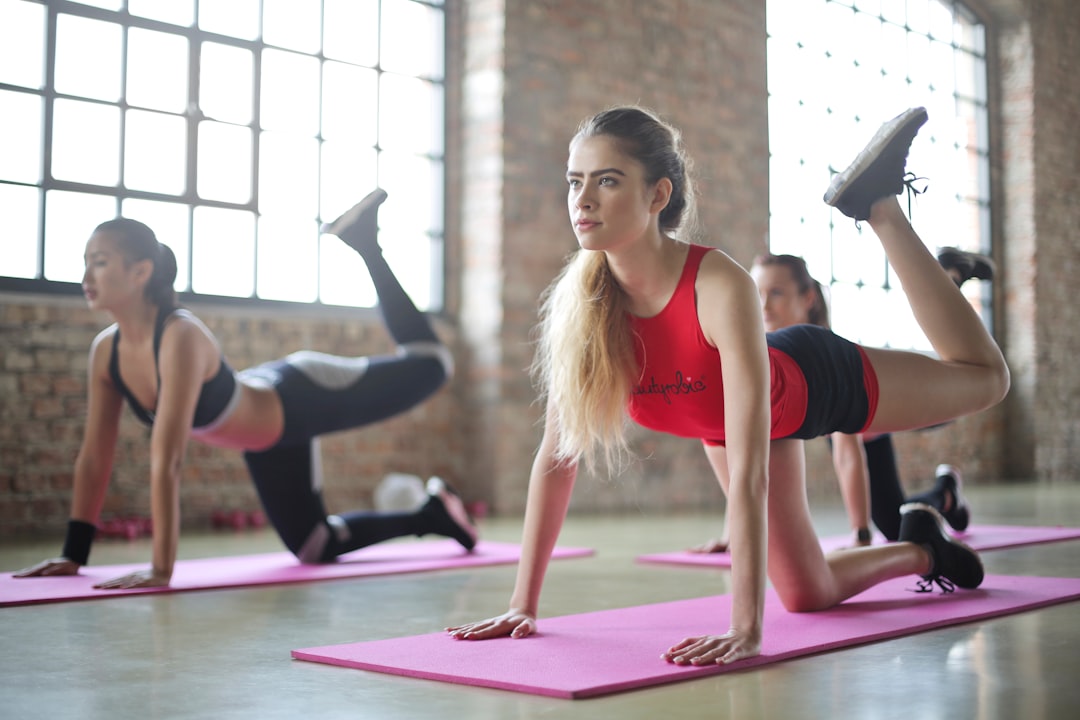 Photo from Unsplash
Photo from Unsplash
Originally Posted On: https://justmovefitnessclub.com/blog/how-to-build-a-balanced-workout-routine/
How to Build a Balanced Workout Routine
Creating a balanced workout routine is essential for achieving your fitness goals, improving overall health, and avoiding burnout or injury. Whether you’re just starting your fitness journey or looking to refine your current regimen, understanding the components of a well-rounded routine is the key to long-term success. At Just Move Athletic Club, we believe in empowering our members with the knowledge and tools to thrive. In this guide, we’ll show you how to design a workout plan that fits your goals, lifestyle, and fitness level, while also making the most of the resources available at our club.
Why Balance Matters in Fitness
A balanced workout routine ensures that you’re not only working towards your specific goals but also addressing all aspects of physical fitness—cardiovascular endurance, muscular strength, flexibility, and recovery. Neglecting one area can lead to imbalances, increasing the risk of injury and limiting progress.
For example, someone who only focuses on cardio might improve their endurance but miss out on the strength benefits of resistance training. Similarly, prioritizing heavy lifting without incorporating flexibility exercises can lead to reduced mobility over time. A balanced routine ensures holistic improvement and sustainable progress.
The Components of a Balanced Workout Routine
A well-rounded workout routine includes the following key elements:
1. Cardiovascular Exercise
Cardio is vital for improving heart health, boosting endurance, and burning calories. It includes activities that increase your heart rate and keep it elevated for a sustained period.
- Examples: Running, cycling, swimming, brisk walking, or group fitness classes like Zumba or spin.
- Goal: Aim for at least 150 minutes of moderate-intensity cardio or 75 minutes of vigorous-intensity cardio per week, as recommended by the American Heart Association.
Tips for Including Cardio:
- Choose activities you enjoy to stay motivated.
- Mix it up with high-intensity interval training (HIIT) for variety and efficiency.
- Incorporate outdoor options like running or hiking for a change of scenery.
2. Strength Training
Strength training builds muscle, increases metabolism, and improves bone density. It’s essential for maintaining functional fitness as you age.
- Examples: Weightlifting, resistance band exercises, bodyweight exercises (e.g., push-ups, squats, planks).
- Goal: Include strength training exercises at least two days per week, targeting all major muscle groups.
Tips for Including Strength Training:
- Start with light weights or resistance bands if you’re a beginner.
- Focus on proper form to prevent injuries.
- Gradually increase resistance or weight as your strength improves.
3. Flexibility and Mobility
Flexibility and mobility exercises enhance range of motion, reduce stiffness, and improve posture. They also help prevent injuries and aid in recovery.
- Examples: Yoga, Pilates, dynamic stretching, foam rolling.
- Goal: Dedicate 10-15 minutes to flexibility exercises daily or after workouts.
Tips for Including Flexibility Training:
- Incorporate a yoga or stretching class into your weekly routine.
- Use dynamic stretches as part of your warm-up and static stretches during your cool-down.
- Focus on areas that feel tight, such as the hamstrings, hips, or shoulders.
4. Core Workouts
A strong core supports overall stability, balance, and posture. Core exercises benefit every aspect of fitness, from lifting weights to running.
- Examples: Planks, Russian twists, mountain climbers, or Pilates-based core work.
- Goal: Include core exercises 2-3 times per week, either as part of your strength training or separately.
5. Rest and Recovery
Rest is when your body repairs and grows stronger. Overtraining can lead to fatigue, injury, and burnout, so recovery is a non-negotiable part of a balanced workout routine.
- Examples: Active recovery days, light stretching, or complete rest.
- Goal: Schedule at least one full rest day per week.
Tips for Recovery:
- Listen to your body; rest if you feel excessively sore or fatigued.
- Prioritize quality sleep to support recovery.
- Stay hydrated and focus on nutrition to fuel recovery.
How to Design Your Balanced Workout Routine
Now that you understand the components, it’s time to put it all together. Follow these steps to create a routine that works for you:
1. Define Your Fitness Goals
Your goals will shape your workout plan. Are you looking to:
- Lose weight?
- Build muscle?
- Improve endurance?
- Enhance flexibility?
- Train for a specific sport or event?
For example:
- If weight loss is your goal, prioritize cardio with a mix of strength training.
- If you’re focused on building muscle, emphasize resistance training and ensure you’re eating enough protein to support growth.
2. Assess Your Current Fitness Level
Understanding where you’re starting from will help you set realistic expectations. For example:
- Beginners should start with low-intensity exercises and gradually increase.
- Intermediate or advanced individuals can handle higher-intensity workouts and more frequent sessions.
3. Plan Your Weekly Schedule
Map out your week to include all key components. Here’s an example schedule:
- Monday: Cardio (30-45 minutes) + Core Work
- Tuesday: Strength Training (Upper Body)
- Wednesday: Rest or Active Recovery (light yoga or walking)
- Thursday: Cardio (HIIT, 20-30 minutes)
- Friday: Strength Training (Lower Body)
- Saturday: Flexibility/Mobility Training (yoga or Pilates)
- Sunday: Rest
4. Mix It Up
Variety keeps your workouts exciting and prevents plateaus. Rotate between different types of cardio (e.g., running, cycling), use various equipment, and try new classes.
5. Track Your Progress
Keep a journal or use fitness apps to monitor your workouts, progress, and how you feel. Adjust your routine as needed to stay challenged.
Common Mistakes to Avoid
Even with the best intentions, it’s easy to make mistakes that can derail your progress. Here’s what to watch out for:
- Skipping Warm-Ups and Cool-Downs
- Neglecting these can lead to stiffness and increase injury risk.
- Overtraining
- More isn’t always better. Rest days are crucial for recovery.
- Focusing on One Area
- Avoid overemphasizing cardio, strength, or flexibility at the expense of other components.
- Poor Form
- Incorrect technique can lead to injuries. Consider working with a trainer to master proper form.
- Setting Unrealistic Goals
- Be patient and focus on steady, sustainable progress.
How Just Move Athletic Club Can Help
At Just Move Athletic Club, we’re here to support every aspect of your fitness journey. Our state-of-the-art facilities offer a wide range of resources to help you build a balanced workout routine, including:
- Group Classes: From high-energy cardio classes to relaxing yoga sessions, there’s something for everyone.
- Strength Training Equipment: Access to free weights, machines, and functional training tools.
- Knowledgeable Trainers: Our certified trainers can create personalized plans tailored to your goals and fitness level.
- Recovery Resources: Enjoy amenities like foam rollers, stretching areas, and expert advice on active recovery.
By becoming a part of the Just Move Athletic Club community, you’ll have everything you need to stay motivated and committed to your routine.
Final Thoughts
A balanced workout routine is the foundation of a healthy, active lifestyle. By incorporating cardio, strength training, flexibility, core work, and rest, you can achieve your fitness goals while maintaining overall health and well-being. Remember, fitness is a journey, not a destination. Be patient with yourself and celebrate every milestone along the way.
At Just Move Athletic Club, we’re here to help you every step of the way. Whether you’re taking your first step into the gym or looking to elevate your routine, our team and resources are ready to support you. Let’s build a balanced workout plan together and make your fitness goals a reality!





